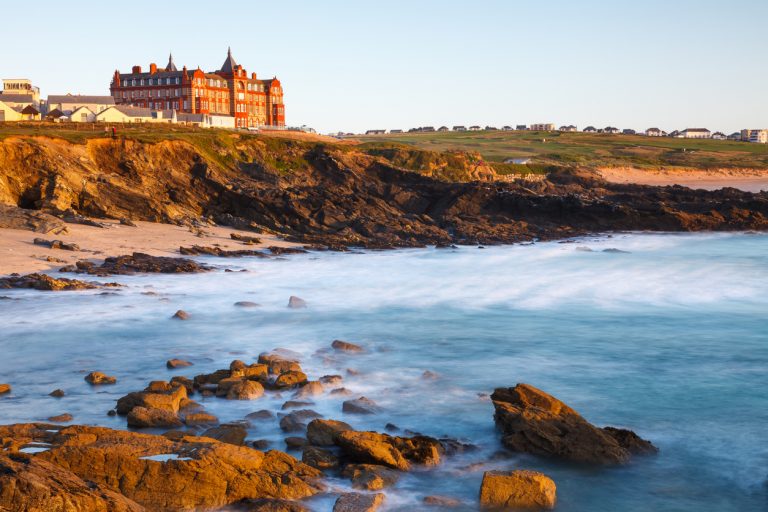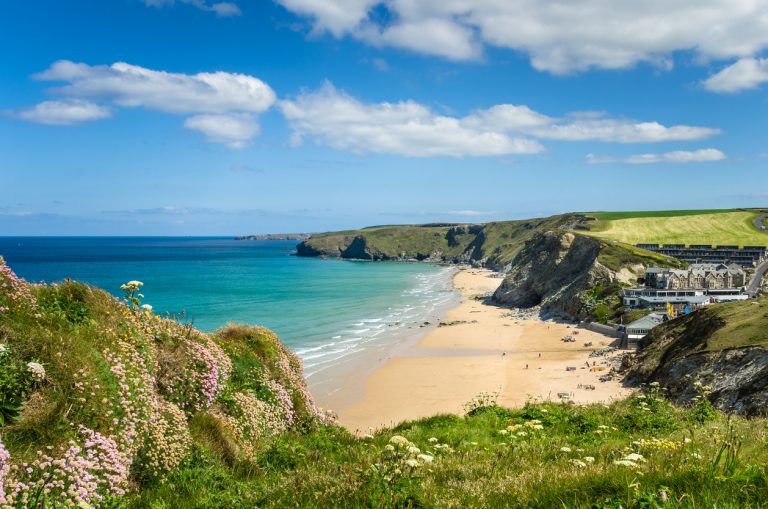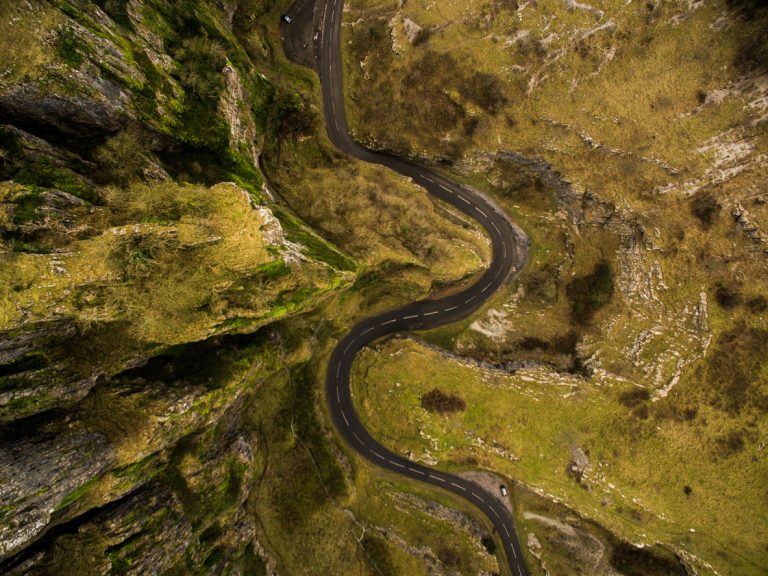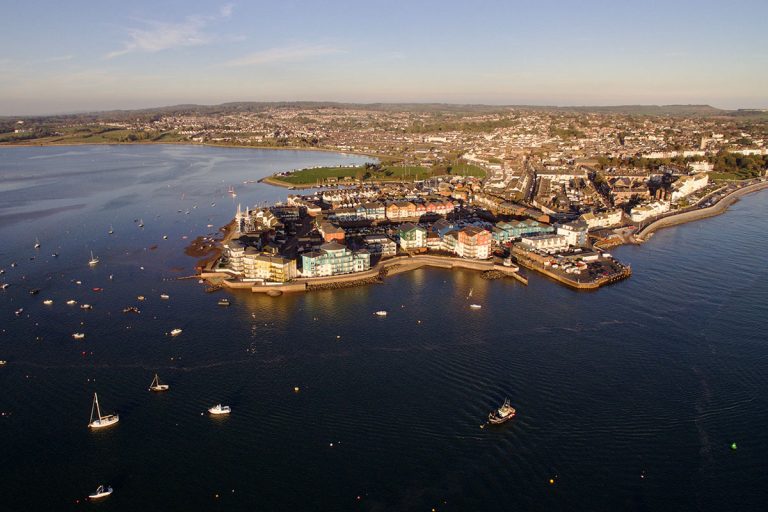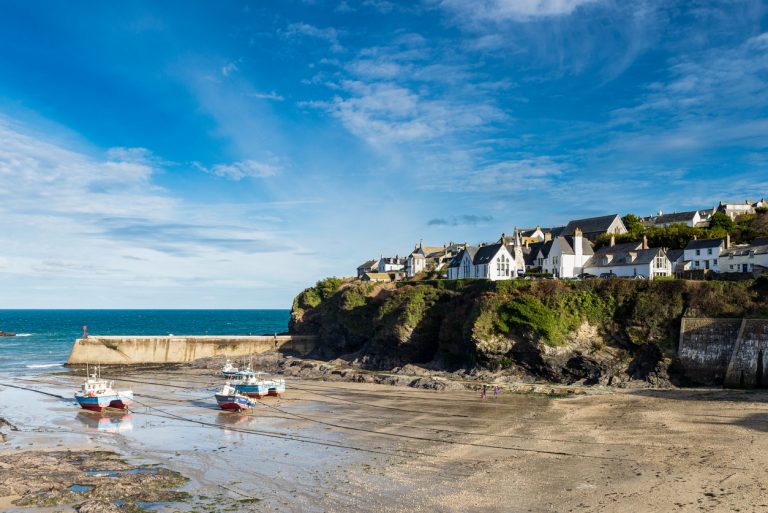34 fun things to do in Bath (2024 guide)
Are you looking for the best things to do in Bath, England? In this blog post, we’re delving into all of them!
One of the country’s quintessentially British cities, Bath sees millions of visitors every year.
Its cobblestone streets lined with Georgian terrace houses and ancient Roman ruins have made it the second-most visited city outside of London.
From history from Roman times, through the Medieval period and all the way to the Georgian era, the city is absolutely bursting with history.
The beautiful buildings are definitely a hook into Bath, but the plethora of places to eat, drink and relax after a long day of history make it a city worth staying in.
I lived in Bath for a year, so I know my way around. The city centre is tiny, and it’s fairly easy to see in one day, but it’s also worth spending a couple of days in Bath to really soak it all in (quite literally – it’s a spa town after all!).
So, what are the best things to do in Bath? Throughout my year living in the city and frequent trips back, I’ve compiled a list of all of the attractions worth visiting – no detail spared. Read on for everything you need to know about Bath’s top attractions!
Top things to do in Bath
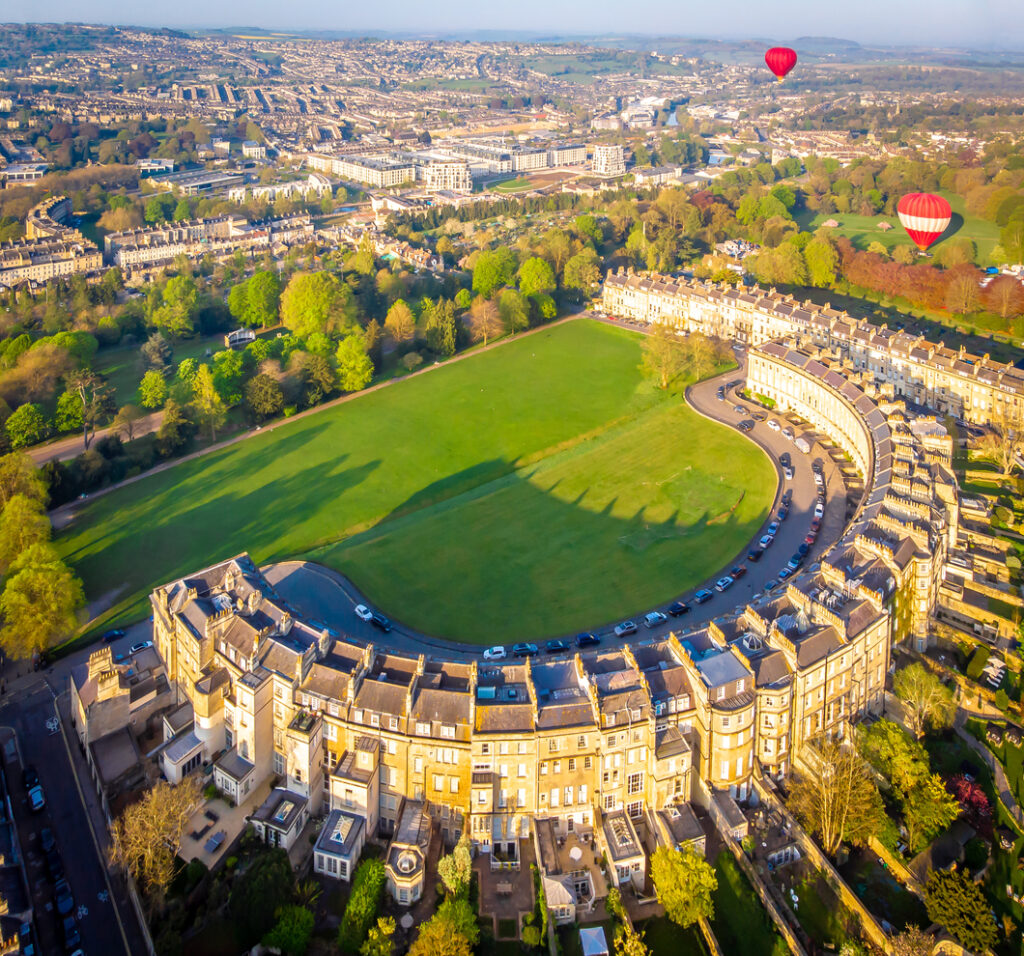
The best Bath attractions include:
- the ancient Roman Baths
- the medieval Bath Abbey
- Georgian architecture like the Circus and the Crescent
- beautiful parks like Sydney Gardens and Royal Victoria Park
- literary and cultural museums
- Bath Thermae Spa
- Bath Christmas Market in December
Let’s delve into the best things to do in Bath!
1. Roman Baths
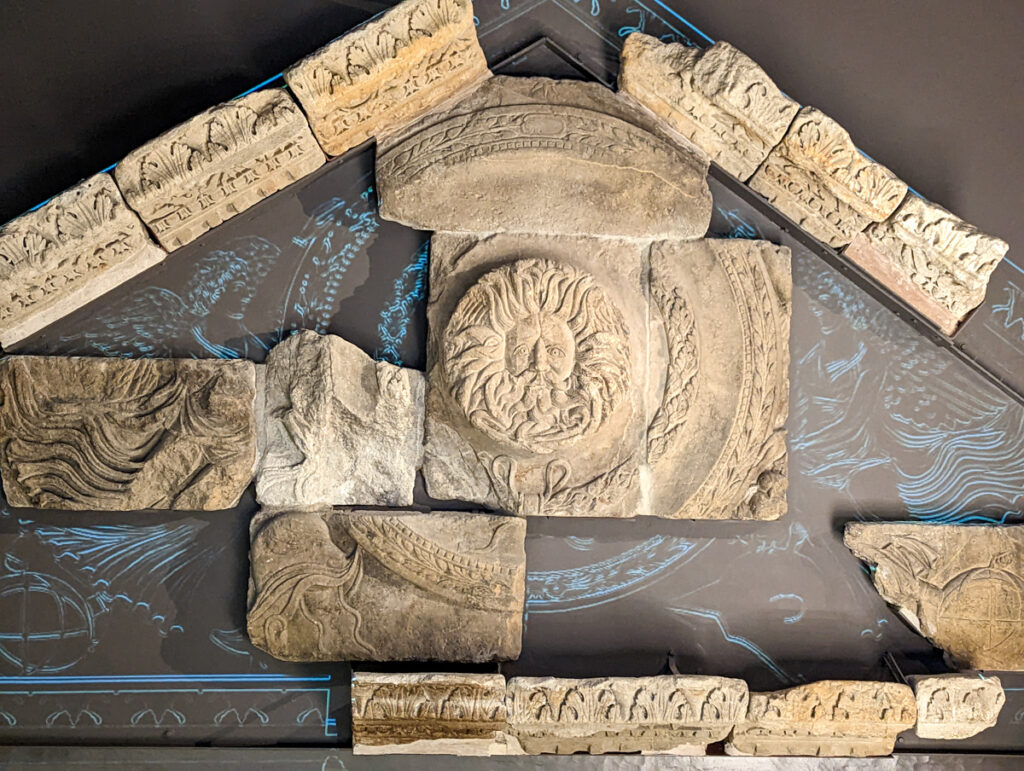
Let’s begin with the Roman Baths – appropriately, where Bath’s significance began!
Romans arrived in Bath between 44AD and 47AD, and the local tribe – the Donbunni – quickly succumbed to them, as was the case in much of the UK, and in Europe, North Africa and Asia.
While the Romans didn’t discover the baths, they certainly took advantage of them, creating a bathing and socialising complex on the site.

What remains are some of the country’s best-preserved ancient Roman ruins, along with a visitor’s centre that explains the Roman presence in this region. You can walk around the ruins, taking in the exhibits and listening to an audioguide (included in your ticket).
I especially love the commentary by author Bill Bryson!
The Roman Baths are potentially the biggest attraction in Bath, so they can get very busy – visit on a weekday if you can (tickets are cheaper then too!).
Visiting: Check ticket prices here. Discounts apply for children, and family tickets are available. Bath residents can get free entry with a BANES card.
You can see my full post about Roman Baths here.
2. Bath Abbey

After the Romans left in around 400 AD, the Anglo-Saxons took over much of Britain – and the first mention of a church in Bath Abbey’s location was in 675 AD.
In fact, there have been three churches on the site of Bath Abbey: a Saxon Convent, a Norman Monastery, and the Abbey that stands today.
Bath Abbey’s most notable achievement is perhaps when Edgar, the first King of all of England, was crowned there in 973.
When I lived in Bath, there used to be a plaque on one of the walls commemorating this – but it was taken inside when some refurbishment work was done and hasn’t yet been replaced.
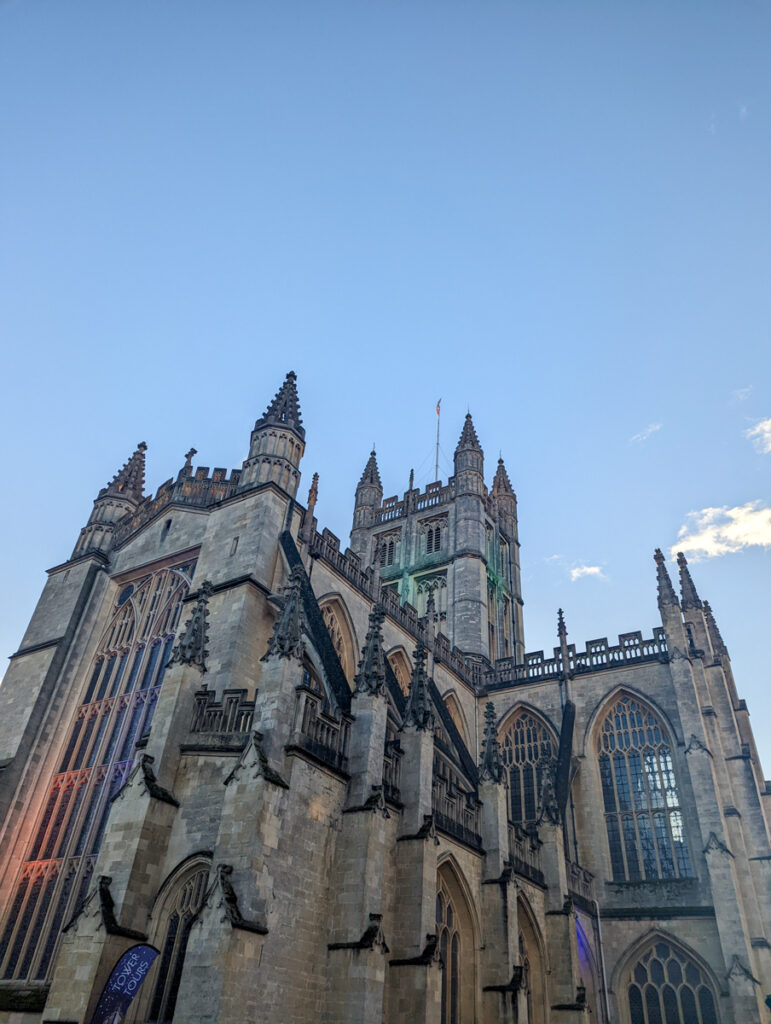
The modern Abbey started being built in the late 15th century when Bishop Oliver King ordered it to be built after a dream about angels travelling to earth via an Olive Tree – he took this as a sign that he should be the one to rebuild the church, and quite literally worked to make his dream come true.
Construction was delayed after the dissolution of the monasteries but was restarted under Queen Elizabeth I. Outside the abbey, you can see engravings of ladders, angels, and olive trees – these represent Bishop Oliver King’s dream.
Bath was badly bombed in World War Two; the Abbey wasn’t hit, but a nearby bomb damaged the Great East Window and some of the northern-facing windows.
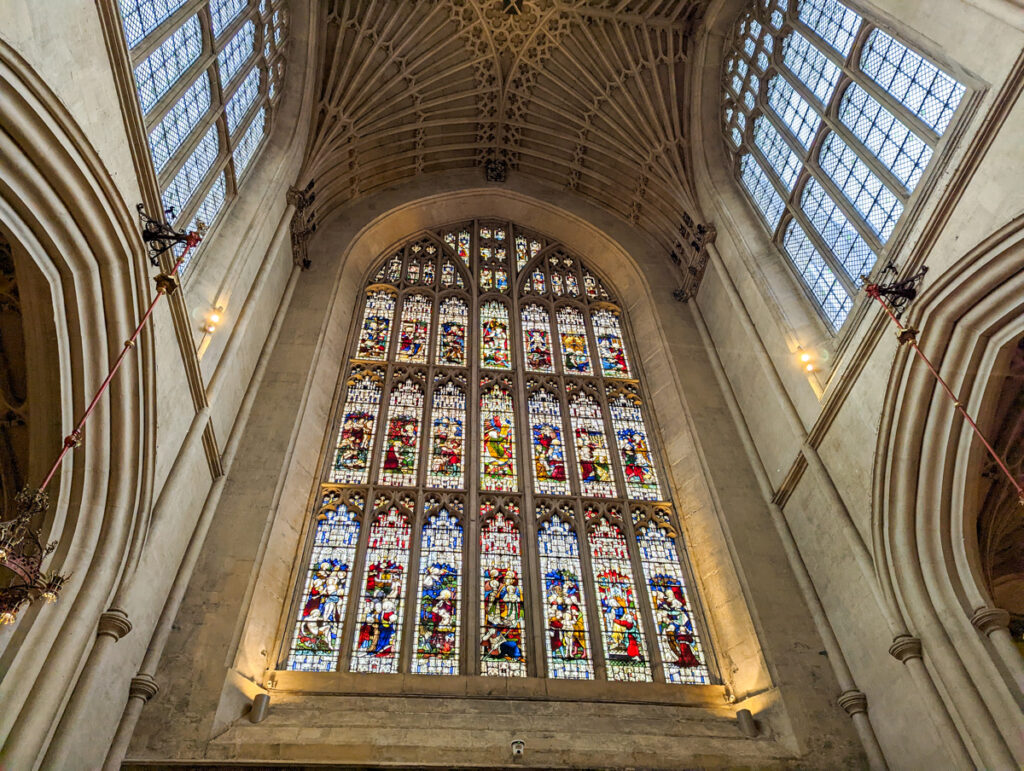
Take a walk around the Abbey and see some of the amazing engravings; it’s sometimes known as ‘The Lantern of the West’ because 67% of its walls are covered in stained glass windows.
Spend some time enjoying the Abbey from outside, and if you are there at the right time, you can take a guided tour of the Abbey or Tower Tour up one of the towers to learn about the inner workings of the building. You’ll finish at the top of the tower, with a great view of the city.
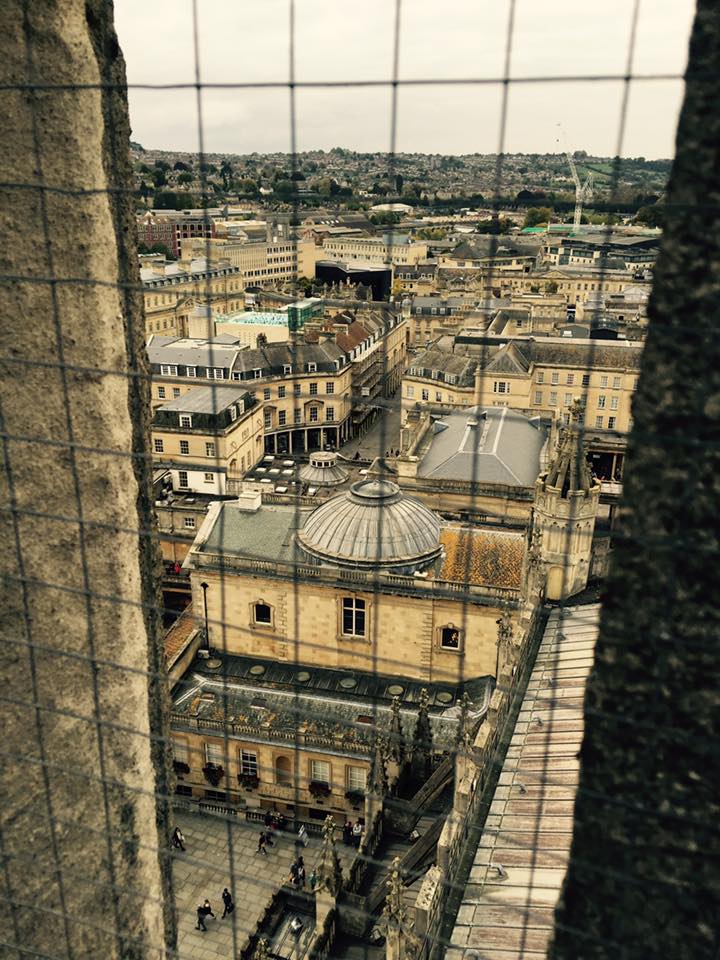
Visiting: Entry to the Abbey is donation only, see more information about tours here.
Click here for my full post about Bath Abbey.
3. Pulteney Bridge and the Weir
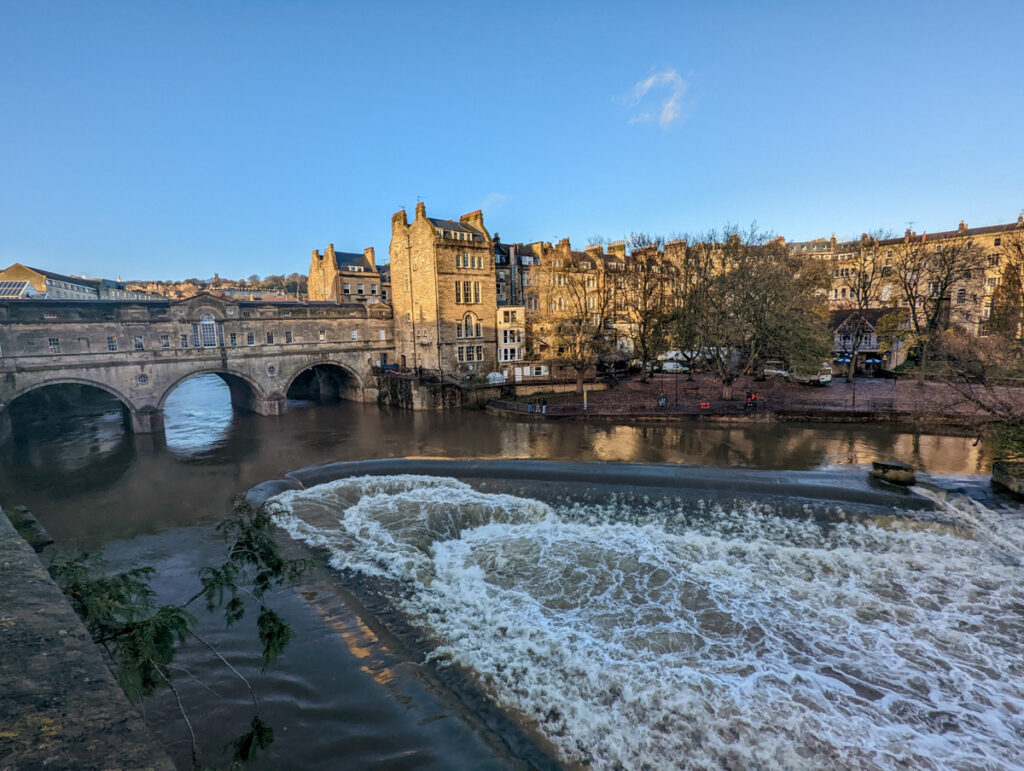
Designed in 1769 by Robert Adam, Pulteney Bridge has the prestigious title of being the only bridge that’s covered in shops in the country, and one of only three in Europe.
It was built on command of William Pulteney, who had great ambitions to build a city to rival Bath on the other side of the horseshoe-shaped Weir.
This wild plan required a way to get over the river, thus a bridge was commissioned. It was actually named after Frances Pulteney, William’s wife (although it could just as easily have been named after William himself)…
The bridge ended up costing £10,000 – a few million in today’s money – and William never really succeeded in creating his rival city.
Still, it’s pretty fun to walk across the bridge and check out the shops and cafes, especially if you’re into Bath Rugby (the rugby pitch is just across the bridge, in William’s would-be city!).
Visiting: Pulteney Weir and Bridge is at the east of the city centre, just south of Waitrose.
4. See the circus
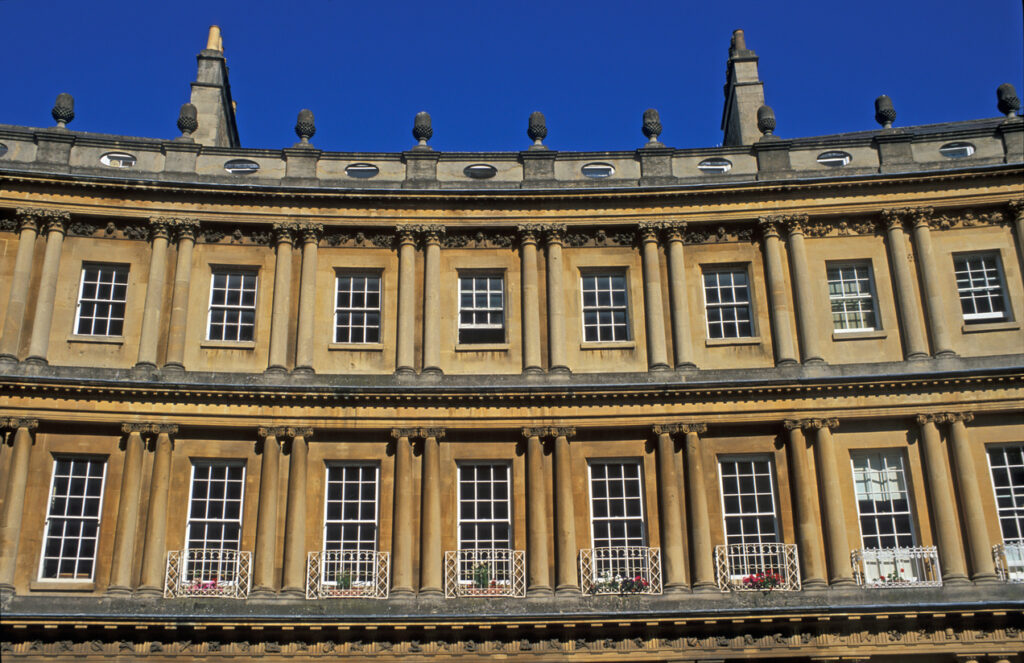
Not a performing circus! You might have noticed that Bath is full of Georgian architecture.
The majority of the buildings were constructed in this period; when the Roman Baths were restored and it gained popularity as a spa town.
This meant that buildings needed to be constructed, quickly.
The Circus is the brainchild of John Wood the Elder, who was fascinated by prehistoric stone circles and wanted to create something that mirrored the Colosseum in Rome.
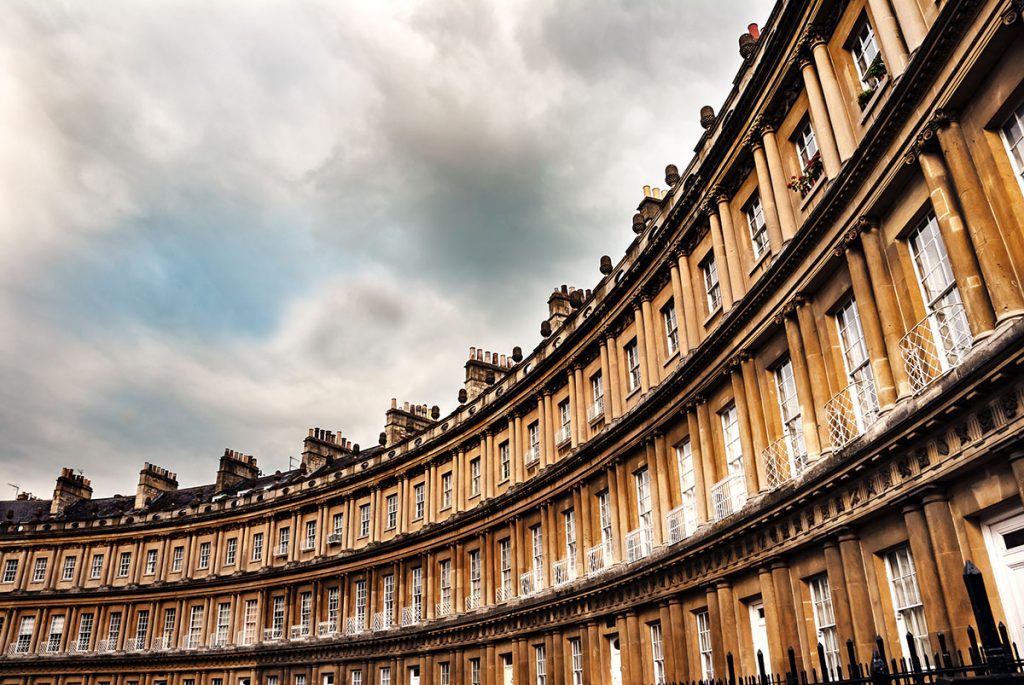
Thus we have the perfectly circular road; which consists of 33 houses all looking out over a green space in the middle.
Construction of the Circus finished in 1768, which was sadly 14 years after John Wood the Elder passed away; so he never got to see his masterpiece.
Visiting: The Circus is technically just a road, so it’s free to visit. You can reach it by walking north up Gay Street from Queen’s Square.
5. The Crescent and Royal Crescent House

The constructors of The Circus had such a great time, that they thought they’d create another similar building a few minutes’ walk away.
Enter The Royal Crescent; a crescent-shaped (could you guess?!) row of Georgian houses facing Royal Victoria Park.
Most of this row is now part of a hotel, but number 1 Royal Crescent has been restored to Georgian style, so you can visit and see exactly how people lived in Bath during its heyday.
You can enter 1 Royal Crescent and explore this part of history in an immersive way.
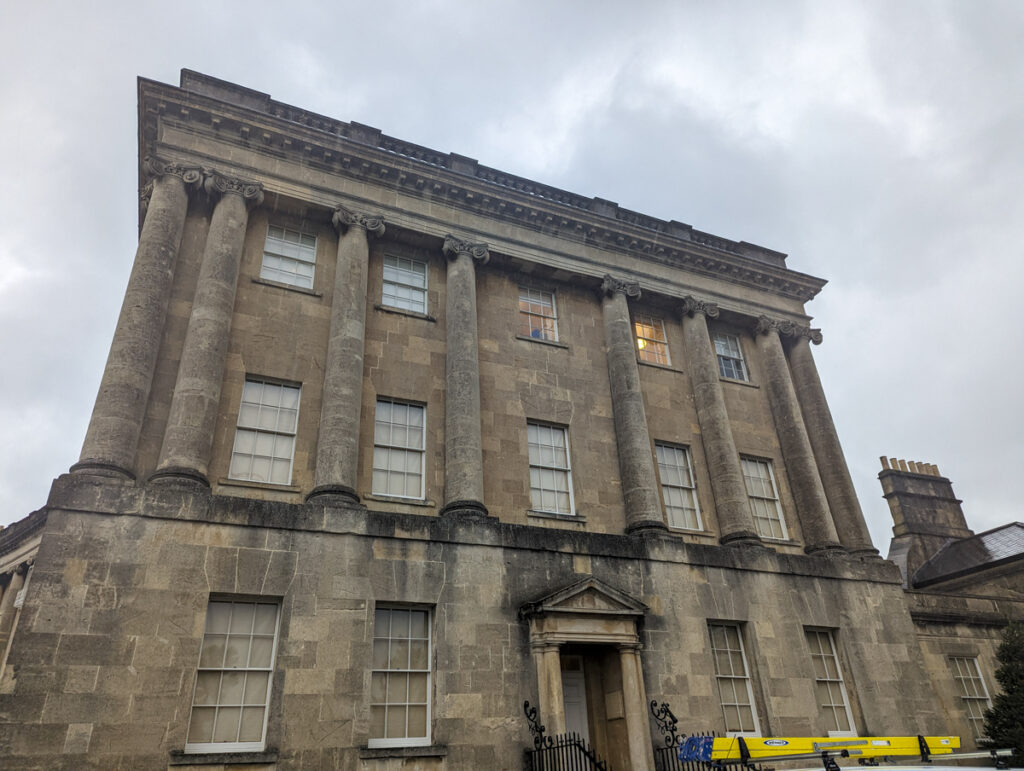
The period furniture represents the period from 1776-1796.
If you’re a Bridgerton fan, you might recognise The Royal Crescent. It was one of Bath’s Bridgerton film settings – although, the popular Netflix show is set in London, not Bath! More on Bridgerton and Bath later.
Visiting: The Crescent is free to look at and can be photographed from the green below.
6. 1.5-Hour Walking Tour with Blue Badge Tourist Guide
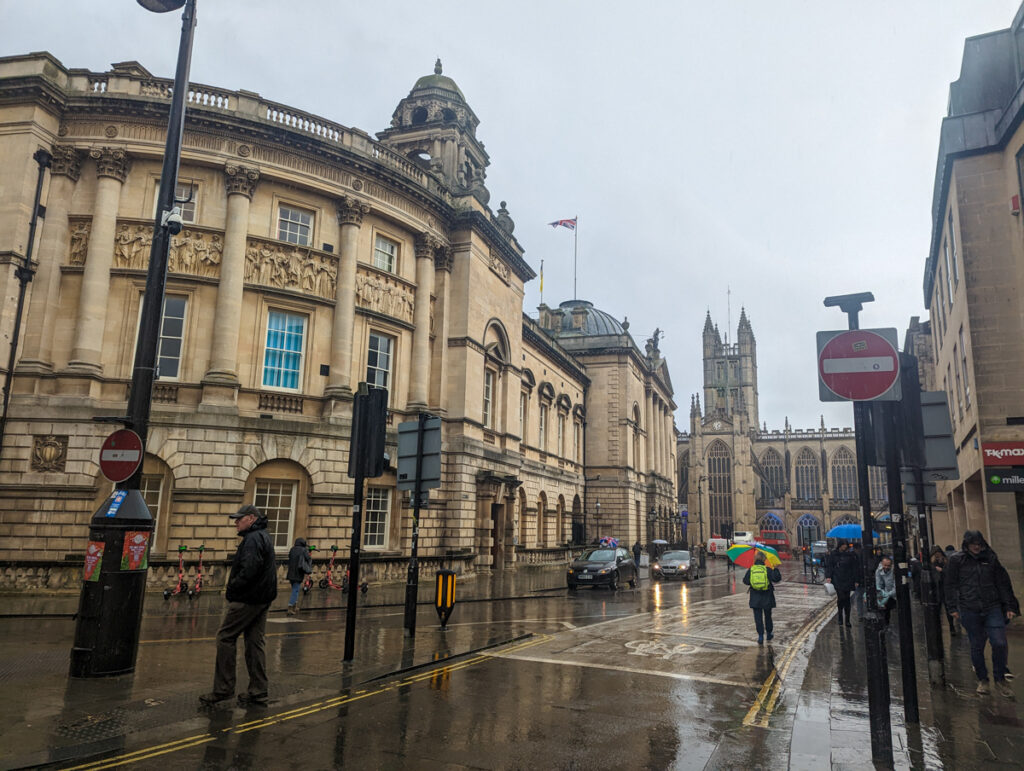
If you want an all-round tour traversing up and down the city’s most famous streets, detailing how Bath Spa was founded by the Romans, offering tales of Bath Abbey’s history and discussing Jane Austen and Mary Shelley’s connections to the city, then take a look at this history walking tour.
It’s run by a Blue Badge guide; the highest accreditation for tour guides in the UK (my mum is one!).
You can buy tickets for a walking tour with a blue badge tourist guide by clicking here.
7. Bridgerton Filming Locations Walking Tour with Music
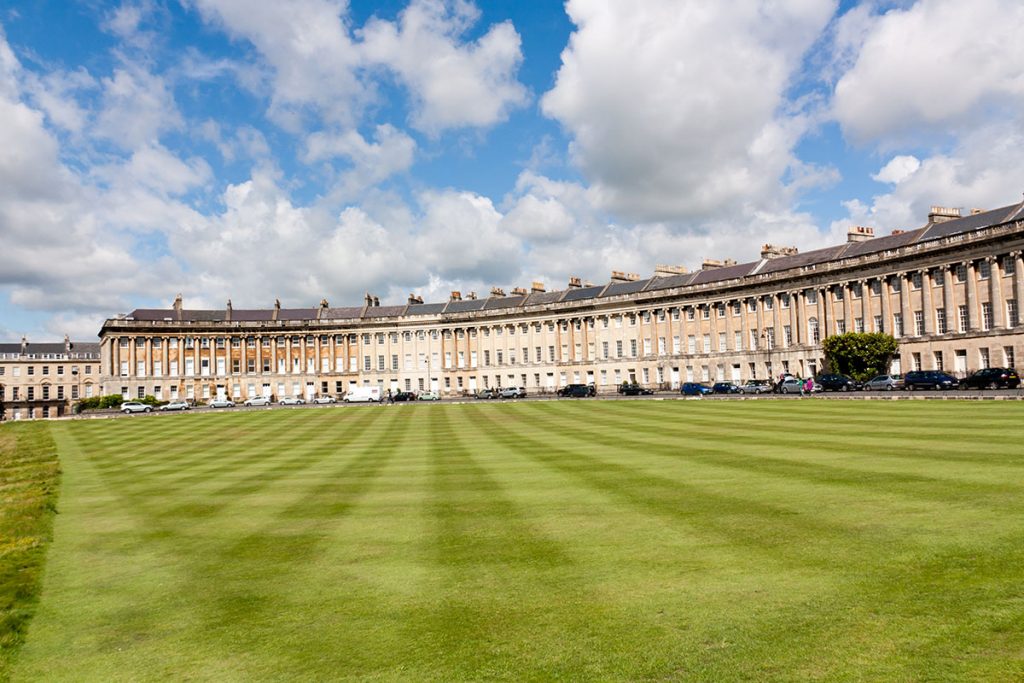
If you’ve watched all the Bridgerton episodes on Netflix, here’s your ideal walking tour! Stroll around the ‘ton, which is “London” in the show, but was actually largely filmed in Bath.
You’ll see places like the Danbury Mansion and Featherington House and learn some entertaining behind-the-scenes tales to impress your friends when you return home.
Plus, when you’re walking from place to place, you have the option of listening to some of the best orchestral hits from the Bridgerton soundtrack.
8. Guided Ghost Tour
You wouldn’t expect a city this historic to not have a few ghostly tales, right?
This Bath guided ghost tour ventures back to the Roman days, beguiling guests with haunted tales from the Roman invasion, Medieval abbey and the Georgian period!
If you’re a fan of the weird and wonderful and want to experience another side to Bath, then don’t miss this ghost walk.
Click here to book tickets for the tour.
9. City Sightseeing Bath: Hop-on Hop-off Bus Tour
This open-topped bus tour takes you around all of the main sites like the Circus, the Crescent, Royal Victoria Park and Bath Abbey, with a full pre-recorded commentary as you go around.
It’s a hop-on, hop-off tour, so you can get out as you please to explore different tourist attractions at your own leisure.
Click here to purchase tickets for this tour.
10. Boat cruise on the River Avon
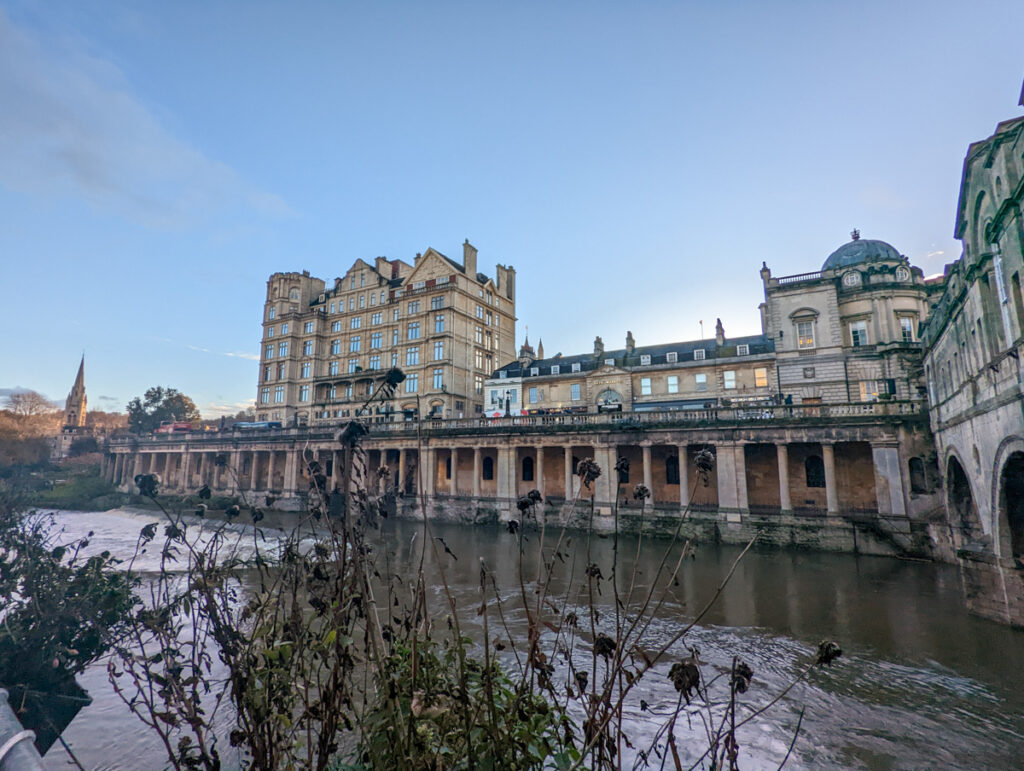
Take a unique view of Bath by exploring from the water!
This sightseeing boat cruise is an intimate 1960s liner, and two glasses of prosecco are included in the ticket.
So you can sail past all of Bath’s best cultural attractions in style!
Click here to purchase tickets to a prosecco boat cruise on the River Avon.
11. Jane Austen Museum
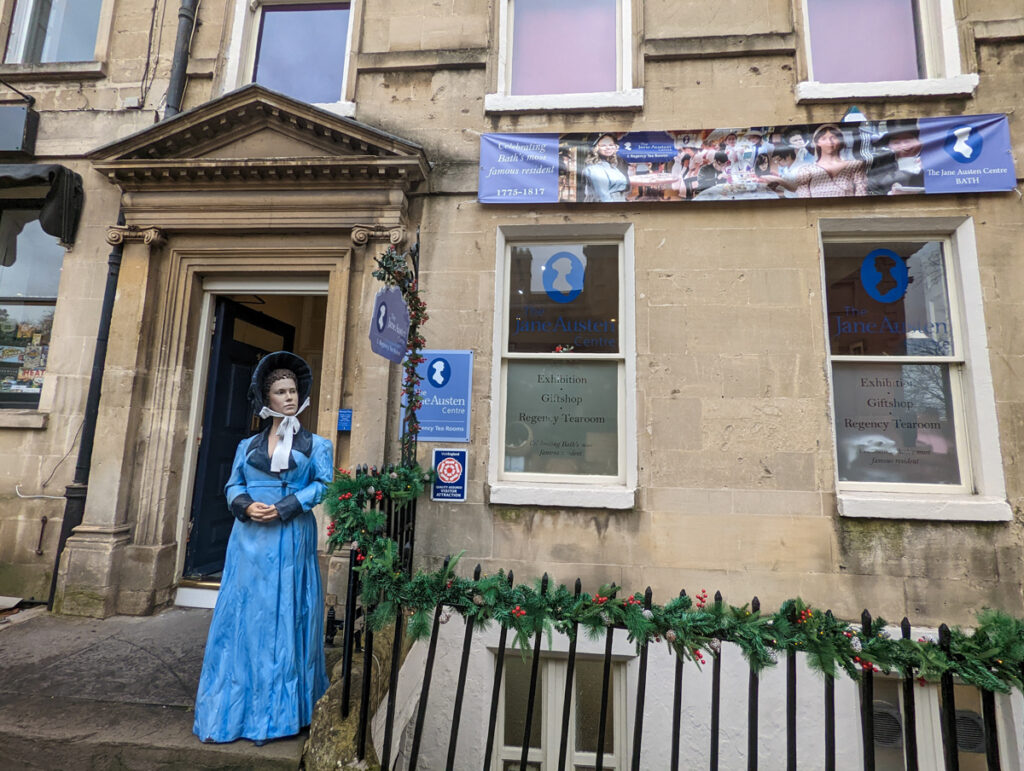
Jane Austen, the world-famous novelist, lived in Bath in the Georgian era. I’ll let you in on a little secret – she had very mixed feelings about it.
However, she is revered as a famous Bath ex-resident, so much so that there is a museum named after her.
At the museum, you’ll discover more about the life and literature of this celebrated writer, as well as how Bath influenced her writings.
If that’s just not enough Austen for you, then time your visit for September when the Jane Austen festival takes place, where you can become a Georgian for a day – potentially the most ‘Bath’ activity going on!
Visiting: The Jane Austen Centre is located on Gay Street, between Queen Square and The Circus. You can click here to buy your tickets in to the museum in advance.
12. Museum of East Asian Art
The Museum of East Asian Art boasts exhibitions spanning over 7,000 years, and is the only museum in the country solely dedicated to art and culture in East and South East Asia.
If you have some wanderlust and want to learn a little more about this incredible part of the world, your journey could start in Bath with this museum!
13. Mary Shelley’s House of Frankenstein
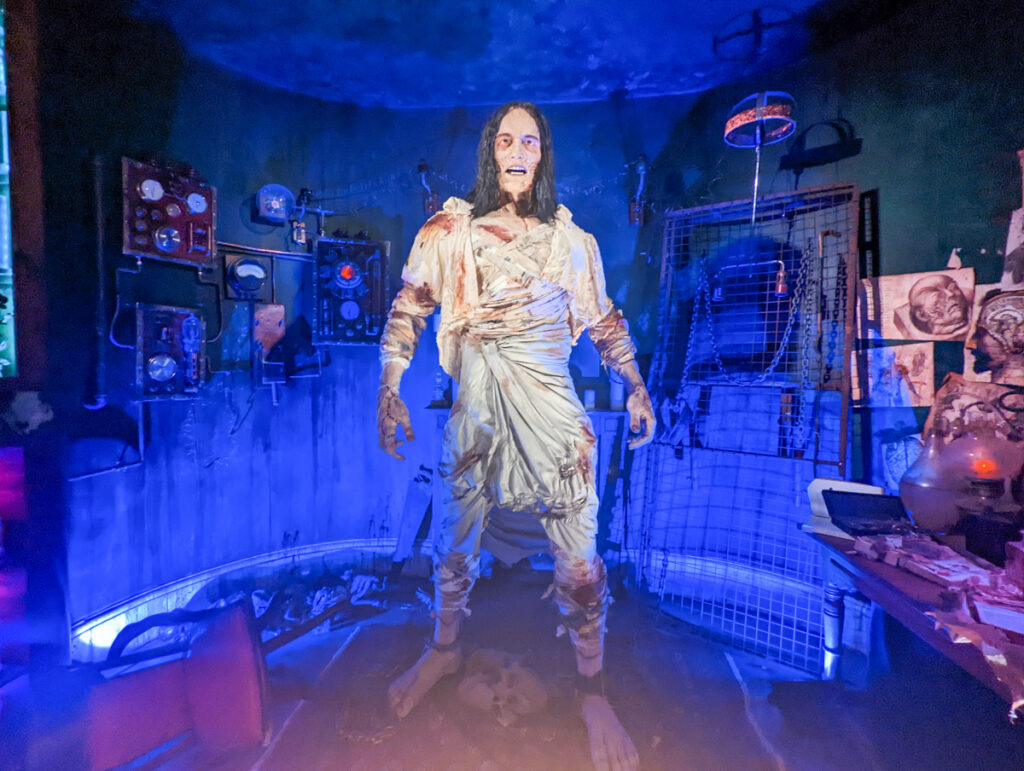
I visited Mary Shelley’s House of Frankenstein on one of my recent trips to Bath.
Welcomed at the door by a woman in a full-gothic dress (who I later discovered was a live actor), I was shown upstairs to the history of Mary Shelley.
She was an extremely interesting character, with forward-thinking views about feminism and sexuality, and actually ended up in some very awkward open relationship situations!
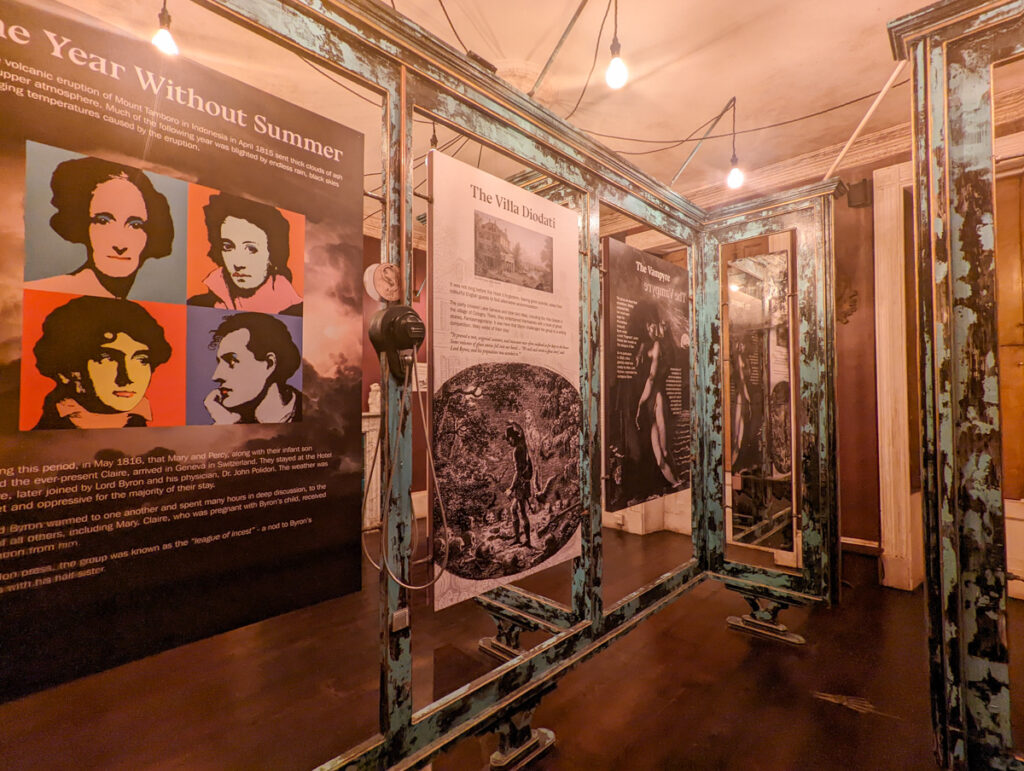
During a hazy summer, when she and some companions were in Switzerland, she was challenged to write the scariest story possible. Thus, Frankenstein was born – Mary Shelley created a monster.
She wrote most of Frankenstein in Bath, which is why a museum dedicated to the writer was established here. The museum is completely immersive, with goulish sounds, strobe lights and visual effects giving the entire story an extra edge.
There’s a section about Frankenstein in popular culture (a whole other “Frankie goes to Hollywood!) and a silent movie rendition of the story.
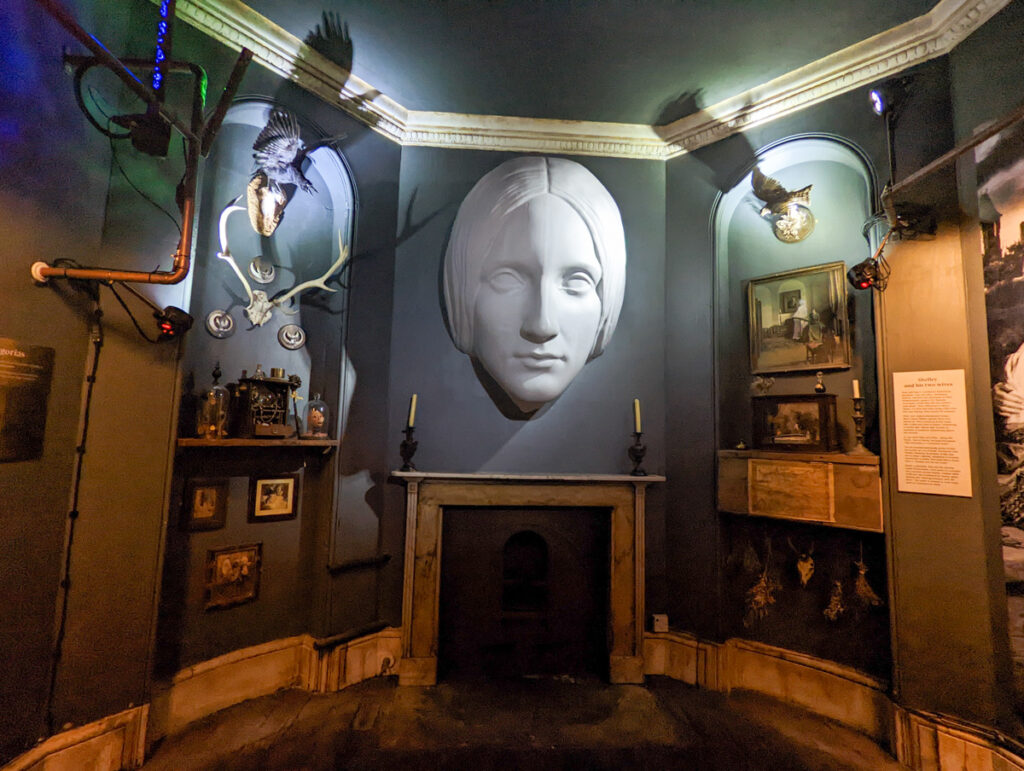
You can end the trip by walking through the basement, which “may or may not” have live actors (so they say!).
After inching down the stairs and being chased back up by the very woman who kindly let me into the museum earlier, I opted to not go too further – you’ll have to visit for yourself and let me know what it’s like!
Visiting: Mary Shelley’s House of Frankenstein is on the same street, also on Gay Street. You can click here to buy your tickets to Mary Shelley’s House of Frankenstein in advance.
14. Fashion Museum
Bath has always been a fashionable place, and you can learn about clothes through the ages as you explore this museum.
Discover what gloves were most fashionable in the Tudor age, gaze at Georgian silk shoes, or move right back to the modern day as you learn interesting facts about the designers with the biggest names!
Visiting: The Fashion Museum is currently closed, having moved from its location at the Assembly Rooms. However, it will settle into a new home, and until then, you can enjoy its collection online.
15. Holburne Museum
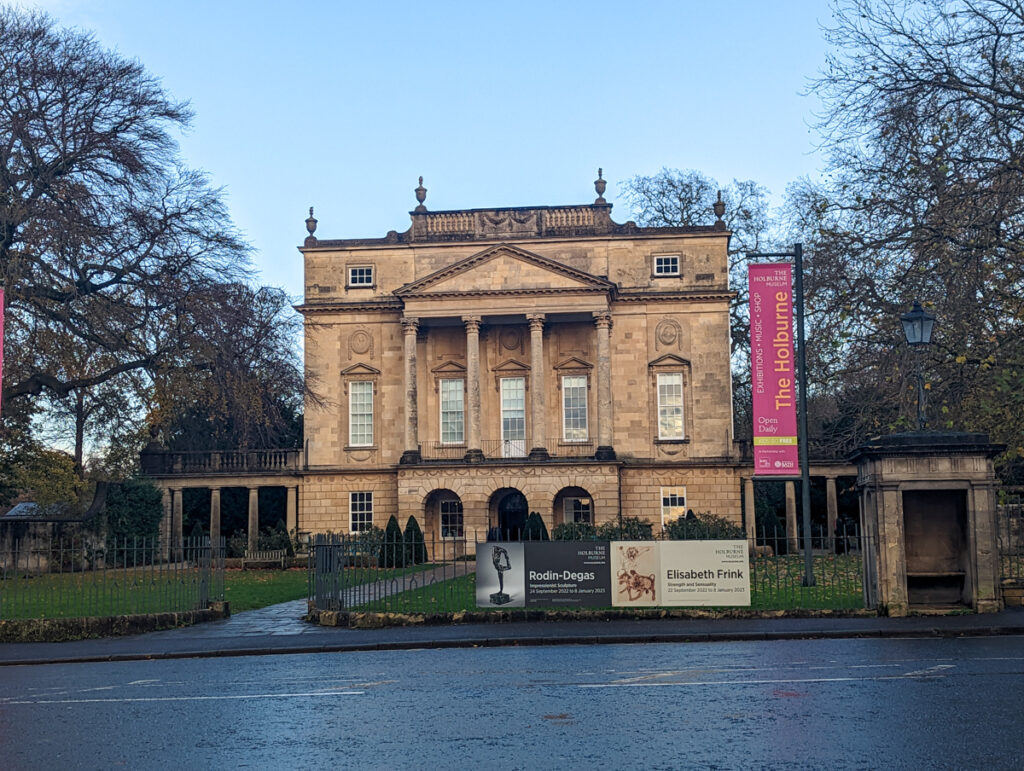
Named after Sir William Holburne, this first-rate museum contains over 2,000 works of art.
It’s a beautiful space showcasing Holburne’s collection of art from around the world, including bronze sculptures and landscape illustrations.
Visiting: The art gallery is on Great Pulteney Street in Bathwick. You can take a look at visiting information here.
16. Thermae Bath Spa
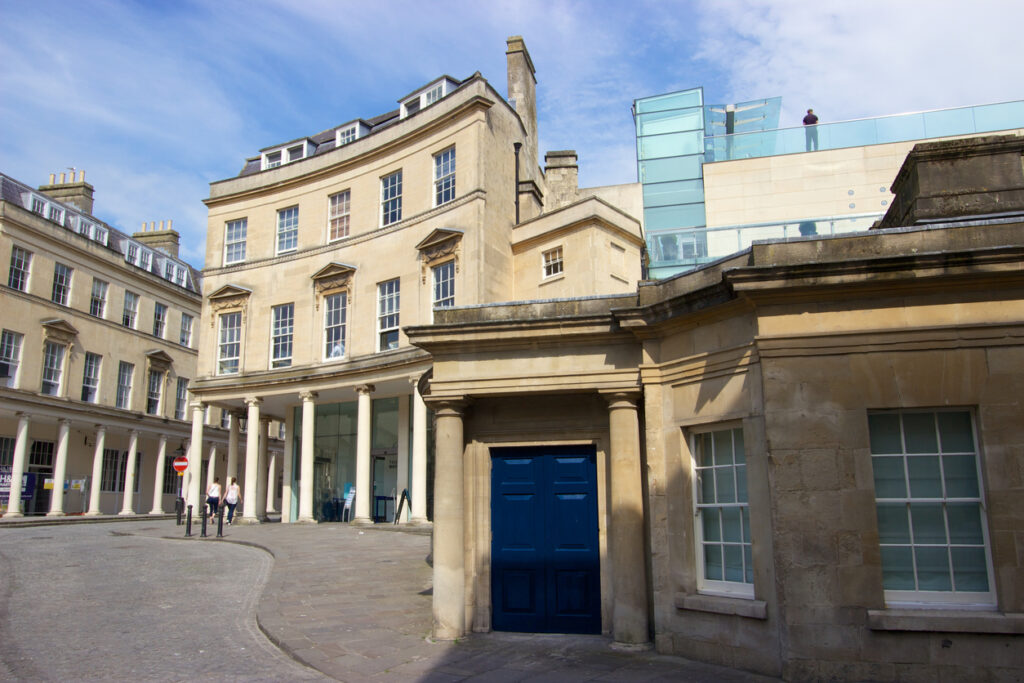
There’s a lot of history in Bath, but also plenty of places to kick back and relax!
Once you’ve walked around museums and historical instructions and soaked in the stories of this beautiful city, head to Thermae Bath Spa.
Bath Thermae Spa is a multi-level, multi-facility complex with thermal baths including a warm rooftop pool, a wellness suite featuring steam rooms, an ice chamber, a relaxation room and treatment rooms.
Visiting: The Bath Thermae Spa is in the middle of the city centre, close to the Roman Baths. Pre-booking is essential.
17. Browse Bath’s best bookstores
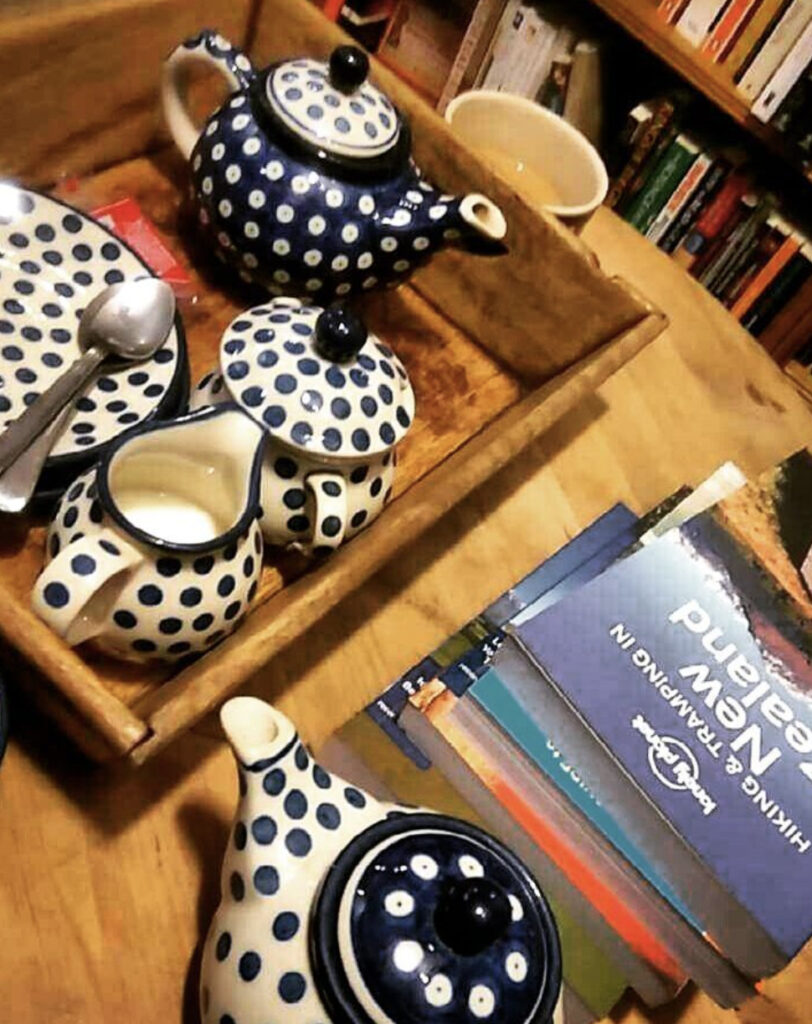
One of my favourite activities when I was living in Bath was touring the bookstores.
Topping and Company was always my favourite – they serve free tea and coffee to browsers and I used to spend hours perusing the travel section – but I also love Mr B’s Emporium of Reading Delights, which has a “Book Spa”.
If you opt for this, you’ll have a consultation with one of their reading experts to talk about your literary likes and dislikes, and they’ll come up with a full reading list tailored for you!
18. Have Afternoon Tea at the Pump Room
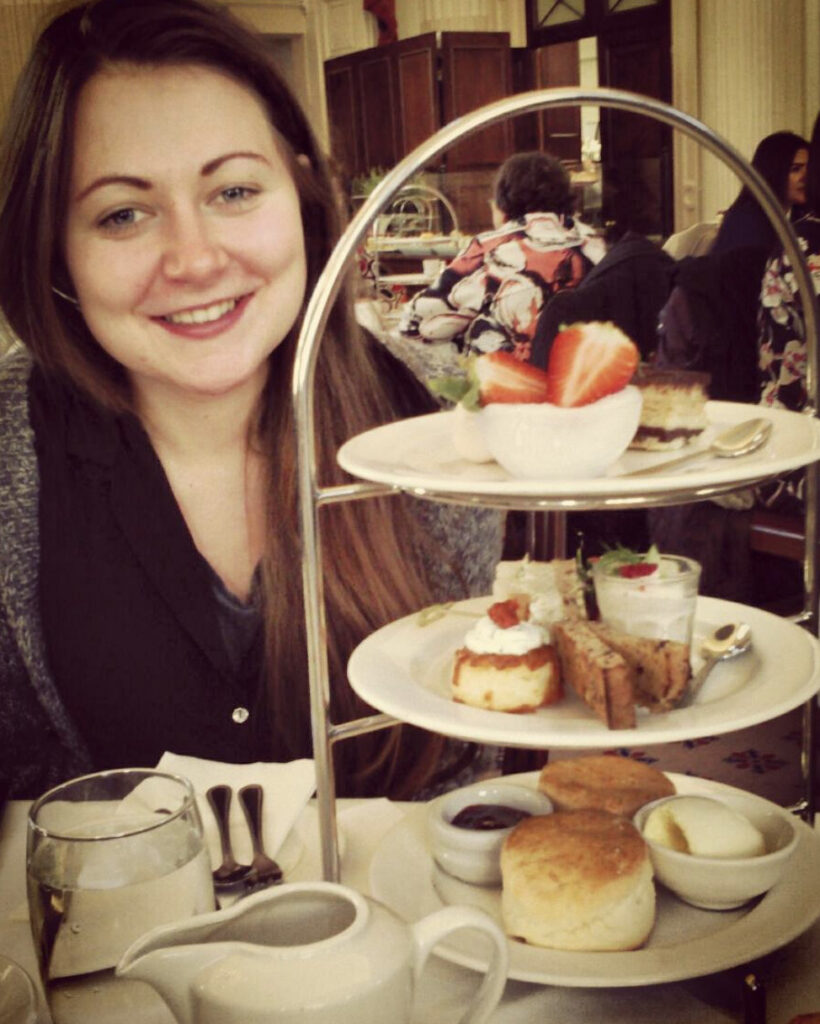
Next to the Roman Baths is the Pump Room, a lovely location for an eloquent meal or afternoon tea.
While it is connected to the Baths, it doesn’t date back quite that far; it began in the seventeenth century when people started drinking the thermal waters.
A drinking water pump was constructed and then a building was built to shelter the pump. And so, we have the pump room, which became a restaurant!
Jane Austen frequented the place, and nowadays it still echoes the grandeur of Georgian times.
There is often live classical music, and it’s the perfect place to enjoy tea and cake, afternoon tea, or lunch!
Visiting: Reservations are recommended – you can book a table by clicking here.
19. Sally Lunn Tea Room
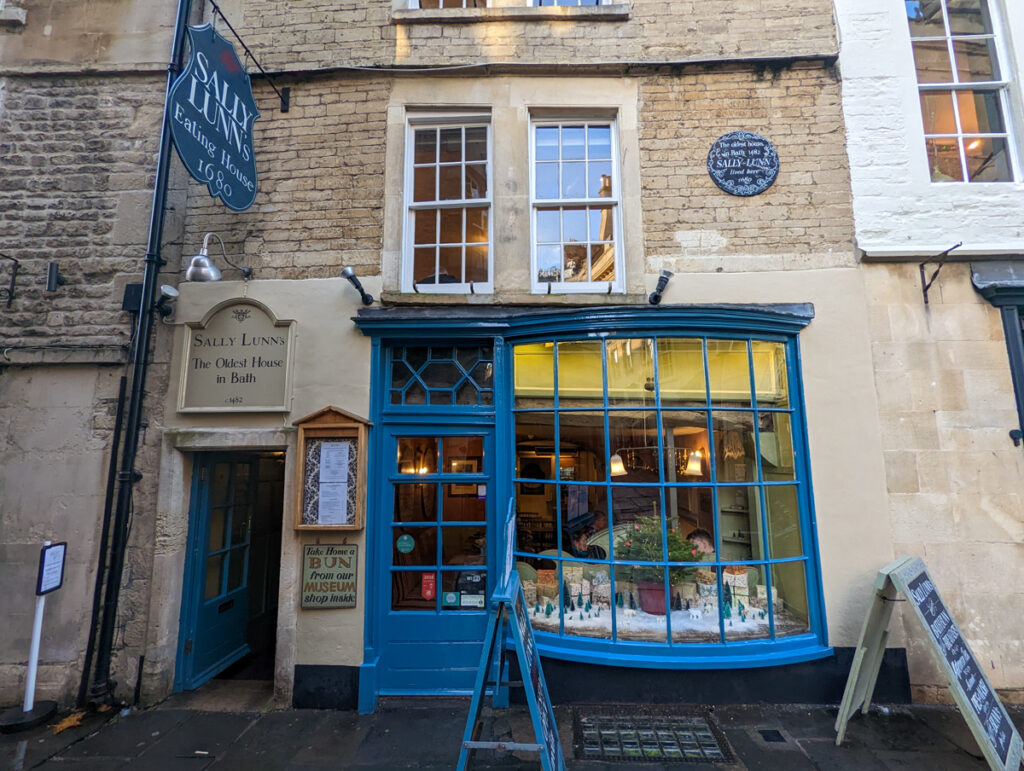
Located in one of the oldest houses in Bath and famous for being one of the world’s most historically prestigious places to eat, Sally Lunn’s was established in 1680 and is famous for being where the Bath bun was created.
Sally Lunn – original name Solange Luyon – was a French refugee who worked in the bakery that was originally on Sally Lunn’s site.
She created a French-inspired brioche roll, which was a roaring success with people in Bath.
As more and more tourists came to the city, news of the Bath Bun spread all over the country – and eventually all over the world.
Along with the historic eating house, there’s a tiny museum and gift shop on-site.
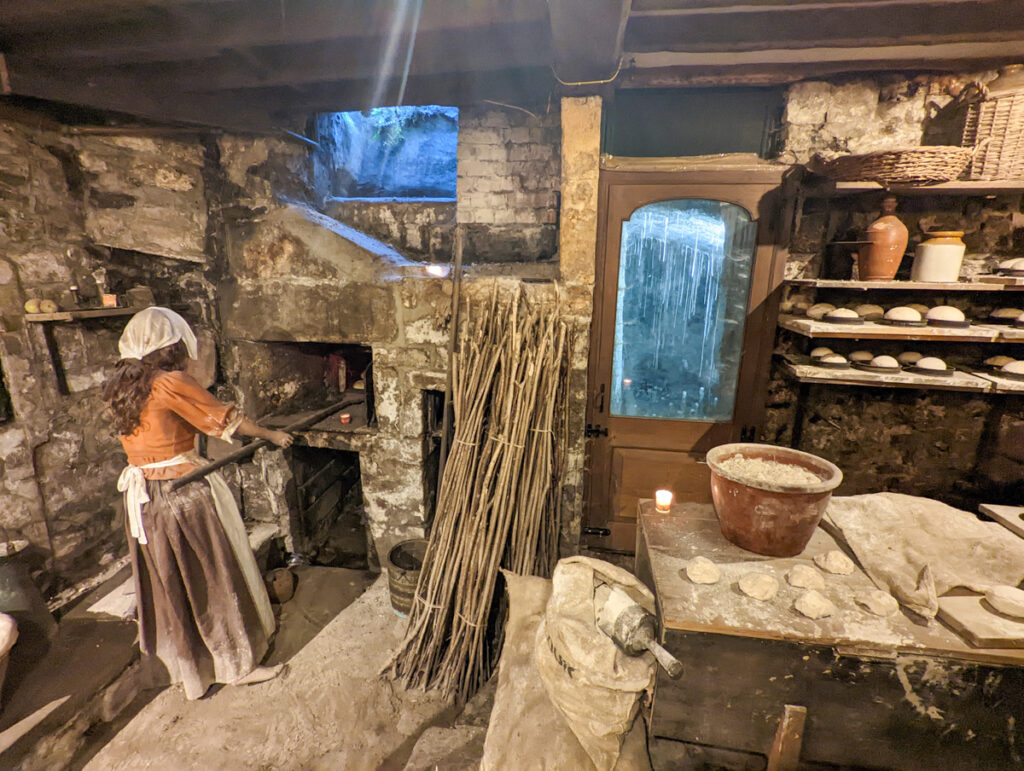
Visiting: Sally Lunn’s is located on Gay Street, close to Queen’s Square. For dining in, booking is recommended. You can reserve a table here. And don’t forget the Bath bun!
20. Drink at the best historic pubs in Bath
In a city that’s so steeped with history, it should come as no surprise that there are plenty of places to drink and be merry!
The Saracen’s Head is thought to be the oldest in Bath, dating back to 1713, it was once stayed in by Charles Dickens. I also love the Coeur de Lion, which feels like you’re taking a step straight back into Victorian Bath!
21. Sydney Gardens
These beautiful gardens, darting back to the Georgian era, sit in the Bathwick area of the city.
Wonderful for a walk around, you’ll need to walk over Pulteney Bridge and down Great Pulteney Street – one of the most quintessential Georgian roads in Bath – to reach them.
They’re just behind the Royal Holborne Museum and are among my favourite places to go walking in Bath.
22. Bath Skyline Walk
Cities are often best viewed from above, and Bath is no exception.
The beautiful City Skyline Walk offers spectacular vistas over the whole city centre, with a National Trust trail that spans 9.6 kilometres through the woodlands and fields above the city centre. But of course, it’s possible to just do segments of this walk.
If you’re looking for things to do in Bath at the weekend, the Bath Skyline Walk is home to the 5k Bath Park Run; a weekly event where people get together to run, jog or walk five kilometres.
It’s completely free!
23. Bath Cycle Path
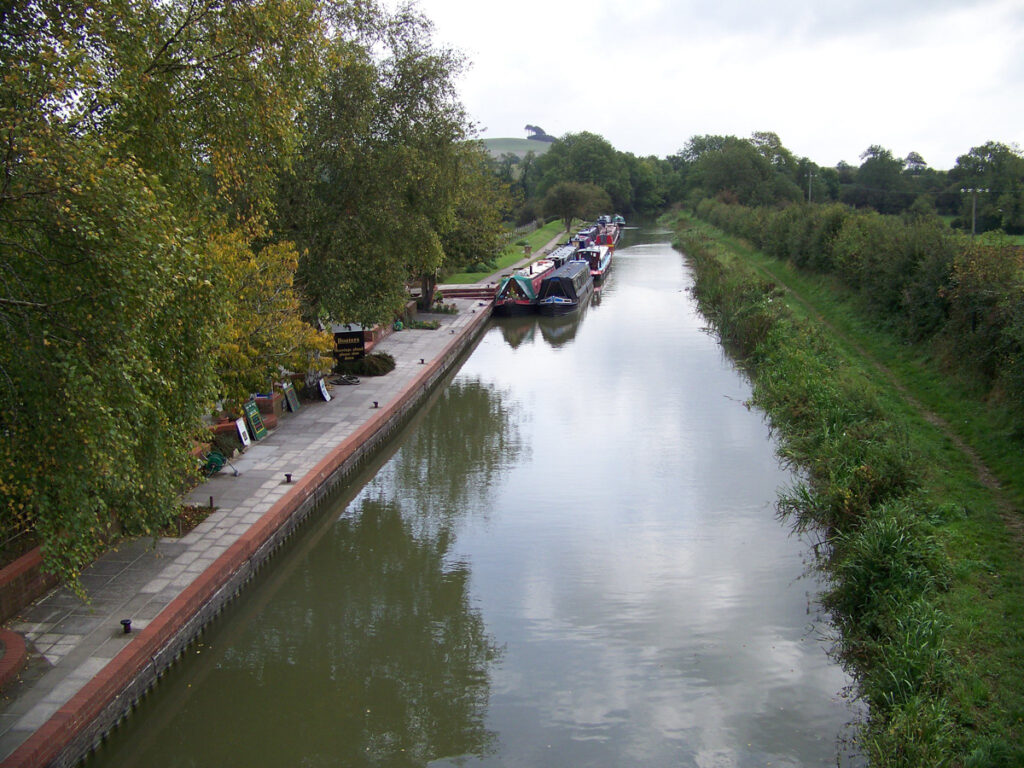
The Bath Cycle Path extends to Bristol on one side, and Bradford on Avon on the other – about 13 miles each way.
It’s a pleasant cycle to either, or a fairly long hike or run.
The Bradford on Avon side is really pleasant, going along the Kennett and Avon Canal. The stretch is dotted by canal boats and country pubs.
It’s with going for a short return walk or cycling or hiking the entire way!
Visiting: The cycle path is just south of the river, from where you can walk both ways.
24. Prior Park
To get to Bath Skyline Walk, you’ll need to go through Prior Park. This 18th-century landscaped garden is perfect for an afternoon stroll and is home to one of only four Palladian Bridges on the globe.
If you have no idea what a Palladian Bridge is, don’t worry, I had no idea either until I started researching this blog post, and I’ve visited Prior Park hundreds of times!
It’s a certain style of architecture influenced by Andrea Palladio. You can read more about it here.
Visiting: It is within walking distance from the city centre – follow maps to Bathwick Hill, where point one is located. Find detailed visiting instructions here.
25. Royal Victoria Park
Encompassing the area around The Royal Crescent and uphill adjacent to Lansdown Road, Royal Victoria Park is named after – you guessed it – Queen Victoria.
She came to Bath when she was 11 years old, and was displeased by the city, thanks to a local resident who made a comment about her ankles while she was there. This was reason enough for the Queen to blacklist the entire city!
Within the park are the Botanical Gardens, which are worth a stroll around, the Pavilion and the Pavilion Cafe, the Romanesque Temple of Minerva, a golf course and a children’s playground.
It’s a lovely spot for a summer BBQ or an autumnal stroll as the leaves change colour.
Visiting: Access from Queens Square or anywhere toward the west of the city
26. Walking Tour of Bath and Guided Tour of Bath Abbey
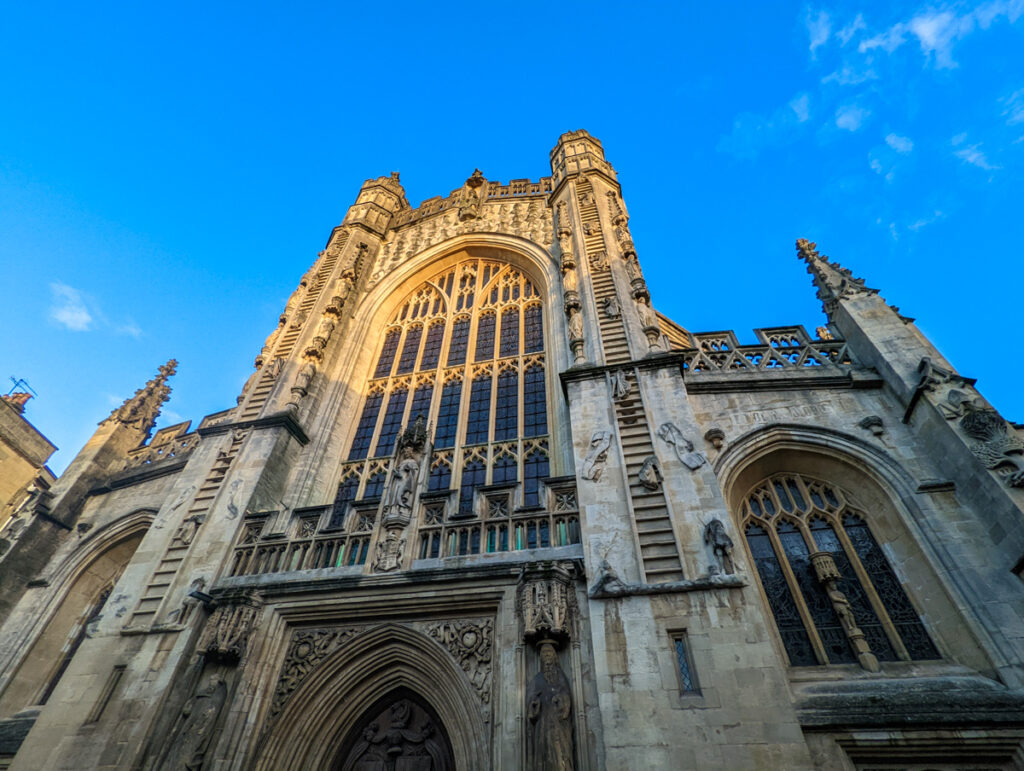
This is another history tour of the city, but it also includes a guided tour of Bath Abbey.
It’s perfect for any travellers who are particularly interested in ecclesial history or Medieval architecture.
Click here for the guided tour!
27. Ghost Hunters Silent Disco Guided Tour
One of the more bizarre things to do in Bath, this is ideal if you’re on a weekend break with friends or possibly even a hen party in the city!
You’ll walk through Bath listening (and dancing, if you want!) to music through headphones, occasionally hearing a spooky ghost tale told by your guide.
28. Bespoke Jane Austen-inspired Guided Tours
Focusing on Jane Austen and the regency era of Bath, this tour will take you back to the late 18th/ early 19th century.
While Jane Austen lived in Bath after her father moved the family there, she actually wasn’t the biggest fan of the city, talking despairingly of its uppity social scene.
However, this period was when Bath was in its heyday, and there’s no denying that the city influenced Jane Austen – and, that Austen continues influencing the city today!
Click here for a guided tour about Ba
29. Catch a show at the Theatre Royal Bath
The Theatre Royal Bath dates back to 1805 and is a grade II* listed building. It’s thought to be one of the most important surviving Georgian buildings. Its productions include a yearly panto, comedy shows and opera concerts.
30. Catch a comedy show at Bath Komedia
Bath also has a venue focusing purely on comedy, Bath Komedia, with some of the best acts in the country performing here. There’s live stand-up every Saturday, and other entertainment throughout the week.
30. Bath Carnival
A fiesta that focuses on music, dance and happiness, Bath Carnival transforms the streets into an engrossing parade. Taking place in July every year, this is one of the best celebrations in the city!
31. Jane Austen Festival
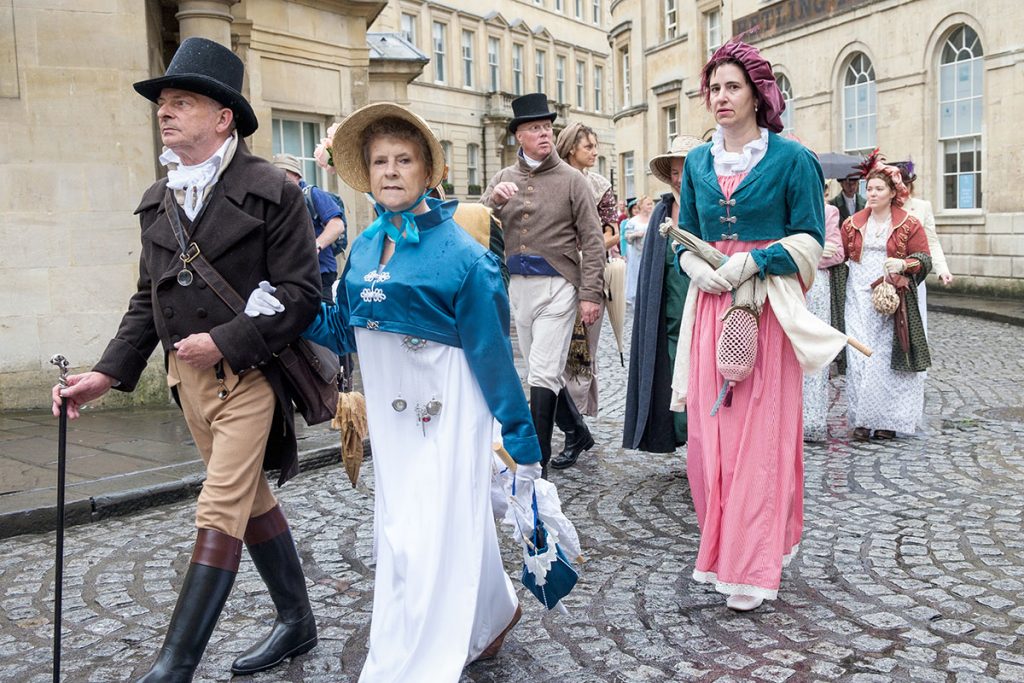
I meant it when I said that Bath residents really like Jane Austen!
This festival celebrates Jane Austen’s Bath, with dress-up opportunities, guided walks, Georgian-themed balls and performances.
32. The Bath Festival
With live acts and book readings, this festival celebrates all that it means to live in the beautiful city of Bath, with literature and talks about its rich history.
Taking place in May every year, this is a must-visit for all literature fans, or for people who love Bath!
33. Bath Christmas market
Bath Christmas Market is one of the best in the country, with stalls spanning throughout the city offering local South West products, mulled wine and seasonal food.
There’s even an apres-ski bar where you can pretend you’re in the Alps!
Also, don’t miss Bath on Ice, an ice skating rink in Royal Victoria Park that takes place every December.
34. Take a Bath day trip
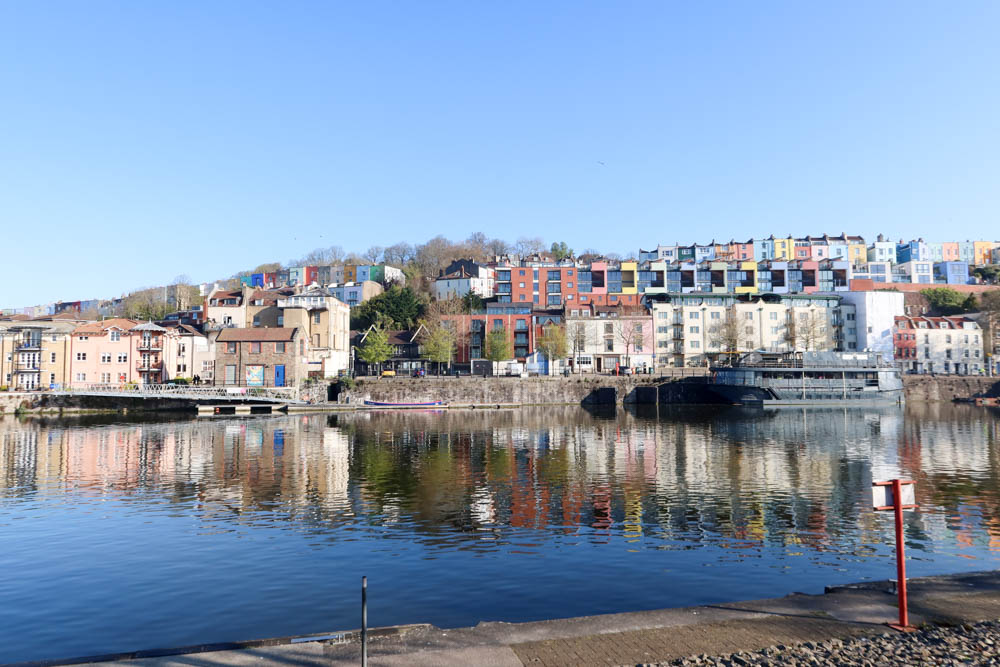
Once you’ve finished exploring Bath, you can use the city as a base to see some of the other highlights in Somerset and Wiltshire! I have a whole blog post about the best day trips from Bath, but my favourites include:
- Bristol: Just 10 minutes away on the train, Bristol is home to the SS Great Britain, Clifton Suspension Bridge and an array of street art.
- Wells and Glastonbury: Glastonbury is a quirky Somerset town which is famous for Glastonbury Tor, a mythical hill with stunning views from the top. Sitting four miles away is Wells, which is England’s smallest city with a majestic cathedral.
- Mendips: The Mendip Hills are perfect for hiking, spanning from Frome to Weston-super-Mare. Climb up Blackdown hill for panoramic views of the whole region!
- Shepton Mallet: A historic market town, Shepton Mallet is worth visiting for its prison tour – I found it fascinating.
- Castle Combe: A quintessential Cotswold village, Castle Combe feels like a step back in time.
- Bradford-on-Avon: With the River Avon winding through and plenty of gorgeous buildings, Bradford-on-Avon is well worth the short drive or train ride from Bath.
- Weston-super-Mare: One of the closest beaches to Bath, this is a family-friendly town with a huge pier.
All of the best things to do in Bath!
There’s a reason why Bath is one of the most visited places in the UK. It basks in thousands of years of history, with each era adding to it to create a complex and fascinating city with countless layers for tourists to explore.
Tales of Bath’s past will whisper to you at every step, but this list of attractions in the city should help you to make the most of your time there.
Don’t forget to schedule some time in for relaxation as well; whether that be at the Bath Thermae spa or at one of the best hotels in the area (you’re going to need it after all that history!).
Plus, Bath is in a gorgeous countryside setting, and while there are some incredible parks in the city, it’s well worth exploring the surrounding Somerset and Wiltshire nature.


